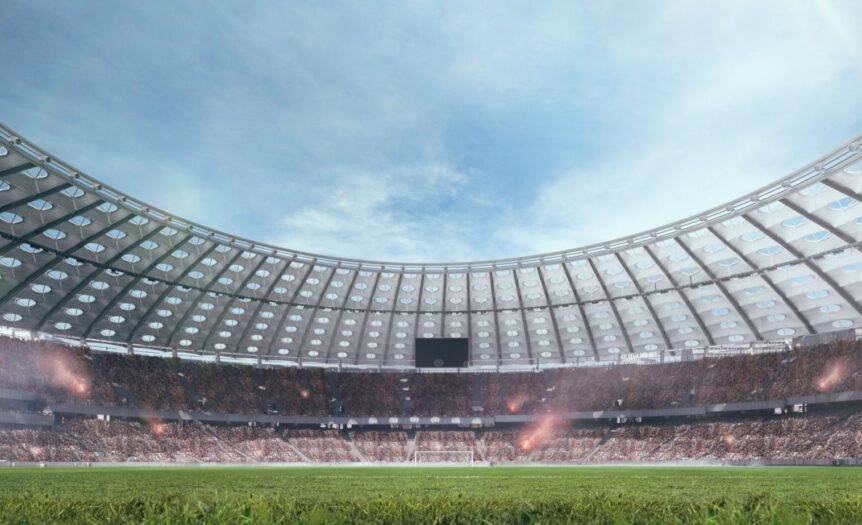Understanding the dimensions of a soccer field, or “ukuran lapangan sepak bola”, is crucial whether you’re an aspiring player, coach, or an enthusiast of the sport. Soccer pitches can vary in size but they must fall within the guidelines set by the International Football Association Board (IFAB). The length of a standard soccer field must be between 100 yards (90 meters) and 130 yards (120 meters) while the width should range from 50 yards (45 meters) to 100 yards (90 meters).
When it comes to international matches, these dimensions are slightly more regulated. Fields used for international games are typically required to be about 110-120 yards (100-110 meters) long and 70-80 yards (64-75 meters) wide. This ensures a consistent playing experience at all levels of international competition. It’s important for players and officials alike to understand these regulations as they can impact the flow and strategy of a game.
Ukuran Lapangan Sepak Bola
Early Origins of Football
I’ve always been fascinated by how sports evolve, and football is no exception. Kicking a ball around for fun likely dates back to ancient times. However, it wasn’t until the 19th century that schools in England started playing versions of the game with varied rules and pitch sizes. Imagine a sport where each school set its own rules – chaos on the field was pretty much guaranteed! This disorganized approach led to some hilarious matches where players often made up the rules as they went along.
Development of Standardized Field Sizes
As football’s popularity surged, so did the need for standardized rules including the size of the pitch. The formation of The Football Association in 1863 marked a turning point. They introduced a comprehensive set of guidelines which included dimensions for the playing field. Today’s measurements have roots in these early standards.
- Minimum length (touchline): 100 meters (110 yards)
- Maximum length: 110 meters (120 yards)
- Minimum width (goal line): 64 meters (70 yards)
- Maximum width: 75 meters (80 yards)
| Aspect | Minimum | Maximum |
| Length (yards) | 100 | 130 |
| Width (yards) | 50 | 100 |
These dimensions ensure that pitches worldwide adhere to a uniform size making it fair and consistent for all teams involved. Whether you’re watching a local club match or an international tournament, knowing that everyone plays by the same size specifications adds to my appreciation for this global game.
Players now compete on fields designed not only to test their skills but also to provide ample space for strategic playmaking—a far cry from those chaotic early days when every school played by its own set of dimensions!

Modern Football Field Sizes
FIFA Regulations for Field Sizes
When it comes to the modern game of football, FIFA has set forth specific guidelines that govern field dimensions. According to their regulations, the length of a football pitch must be between 100 meters (110 yards) and 110 meters (120 yards), while the width needs to fall between 64 meters (70 yards) and 75 meters (80 yards). This ensures a standardized playing surface for official matches. However, there’s some flexibility allowed in these measurements to accommodate different levels of play and stadium designs.
- Length: 100m – 110m | Width: 64m – 75m
These are not just arbitrary numbers; they’re crucial for maintaining the integrity of the game. A larger field may benefit teams with a strong physical presence and stamina, while smaller pitches can enhance the performance of technically skilled players who thrive in tighter spaces.
Variations in Field Sizes Across Different Leagues
While FIFA provides general guidelines, variations still exist among different leagues and competitions:
- Premier League fields tend to stick closely to FIFA’s recommendations.
- La Liga in Spain sometimes features slightly narrower fields which can influence gameplay style.
- Major League Soccer (MLS) in North America also adheres largely to FIFA standards but you’ll find some stadiums with tighter confines due to multi-use venues.
| League | Typical Length Range | Typical Width Range |
| Premier League | 100m -105m | 68m -73m |
| La Liga | 100m -110m | 64m -68m |
| MLS | 110m | up to 75 m |
Stadium architecture plays a significant role as well; historical grounds may have unique dimensions that add character but also present challenges when modernizing facilities or hosting international fixtures.
To get an idea of how these sizes impact play, consider Anfield’s tight pitch which facilitates Liverpool FC’s high-intensity pressing game. Contrast this with Barcelona’s Camp Nou where extra space accommodates their possession-based style. These subtle differences contribute significantly to each league’s distinct flavor and tactical diversity.








